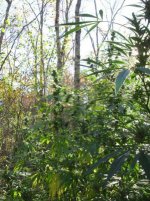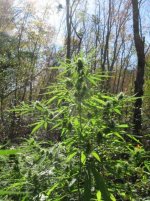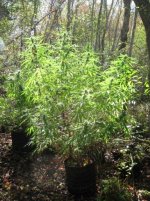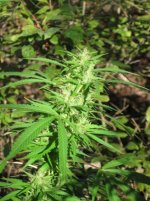A few years back we tried putting a pond in way back on the family property because we had a wet spot that never dried up. Long story short, it didn't work now we have a massive hole in the ground with one corner of it constantly holding about 2 inches of standing water, even with heavy rains it don't get any deeper than 3-4 inches as it just spreads across the hole and dries back down to the 2 inches in the corner with in a day or 2.
Im wondering if I could do a swamp tube type thing here? Maybe test with 1 plant and if it works there is enough room for 2 or 3 the next season.
Let me know if I can do the following, take a plastic storage tote about 30 - 40 gallons or so and set in right in the 2 inches of water with the entire bottom cut out, then fill with pro mix or some other potting mix, add ferts, put in seedling and call it done?
would the water wick up supplying a constant fresh water source to the plant? as long as the corner of the pond didn't dry up would the wicking affect of the water be all the plant needs? Would it be to much water?
Next question is how would you fert a plant in this situation other than mixing in time released when you dumped in the soil? obviously if the soil is staying saturated from the wicking then you wouldn't want to come in and dump water soluble nutes on it, and top dressing would work either because you'd have to water it in..
Thought/advise on this is greatly appreciated.
Tommy
Im wondering if I could do a swamp tube type thing here? Maybe test with 1 plant and if it works there is enough room for 2 or 3 the next season.
Let me know if I can do the following, take a plastic storage tote about 30 - 40 gallons or so and set in right in the 2 inches of water with the entire bottom cut out, then fill with pro mix or some other potting mix, add ferts, put in seedling and call it done?
would the water wick up supplying a constant fresh water source to the plant? as long as the corner of the pond didn't dry up would the wicking affect of the water be all the plant needs? Would it be to much water?
Next question is how would you fert a plant in this situation other than mixing in time released when you dumped in the soil? obviously if the soil is staying saturated from the wicking then you wouldn't want to come in and dump water soluble nutes on it, and top dressing would work either because you'd have to water it in..
Thought/advise on this is greatly appreciated.
Tommy






